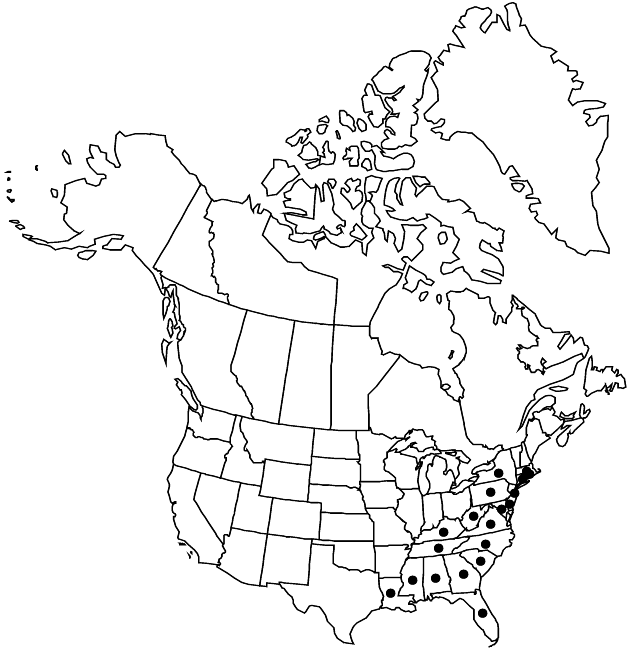Eupatorium pilosum
Fl. Carol., 199. 1788.
Perennials, 30–100+ cm. Stems (from short rhizomes) single, sparsely branched distally, densely puberulent to pilose throughout. Leaves usually opposite (distal sometimes alternate); simple, sessile or subsessile; blades ± 3-nerved (distal to bases), elliptic, lanceolate, or lanceovate, 30–90 × 20–45 mm (lengths mostly 2–2.5 times widths), bases rounded to rounded-cuneate, margins unevenly serrate, apices acute to attenuate, faces puberulent, glanddotted. Heads in corymbiform arrays. Phyllaries 7–10 in 2–3 series, oblong to lance-oblong, 2–7 × 1–1.5 mm, apices (sometimes whitish) acuminate to acute, mucronate, abaxial faces puberulent, glanddotted. Florets 5; corollas 3.5–4 mm. Cypselae 3–4 mm; pappi of 30–50 bristles 4–5 mm. 2n = 20, 30, 40.
Phenology: Flowering Jul–Sep.
Habitat: Moist, low ground, margins of ponds, sandy soils, savannas, ditches
Elevation: 20–100+ m
Distribution

Ala., Conn., Del., Fla., Ga., Ky., La., Md., Mass., Miss., N.J., N.Y., N.C., Pa., R.I., S.C., Tenn., Va., W.Va.
Discussion
Eupatorium pilosum has been most commonly treated as a variety of E. rotundifolium; it is distinct morphologically by its leaves, which are narrower and 3-nerved distal to bases, rather than 3-nerved from bases. Distal leaves of E. pilosum tend to differ from the proximal by being alternate with entire margins.
Selected References
None.
Lower Taxa
"fine" is not a number.